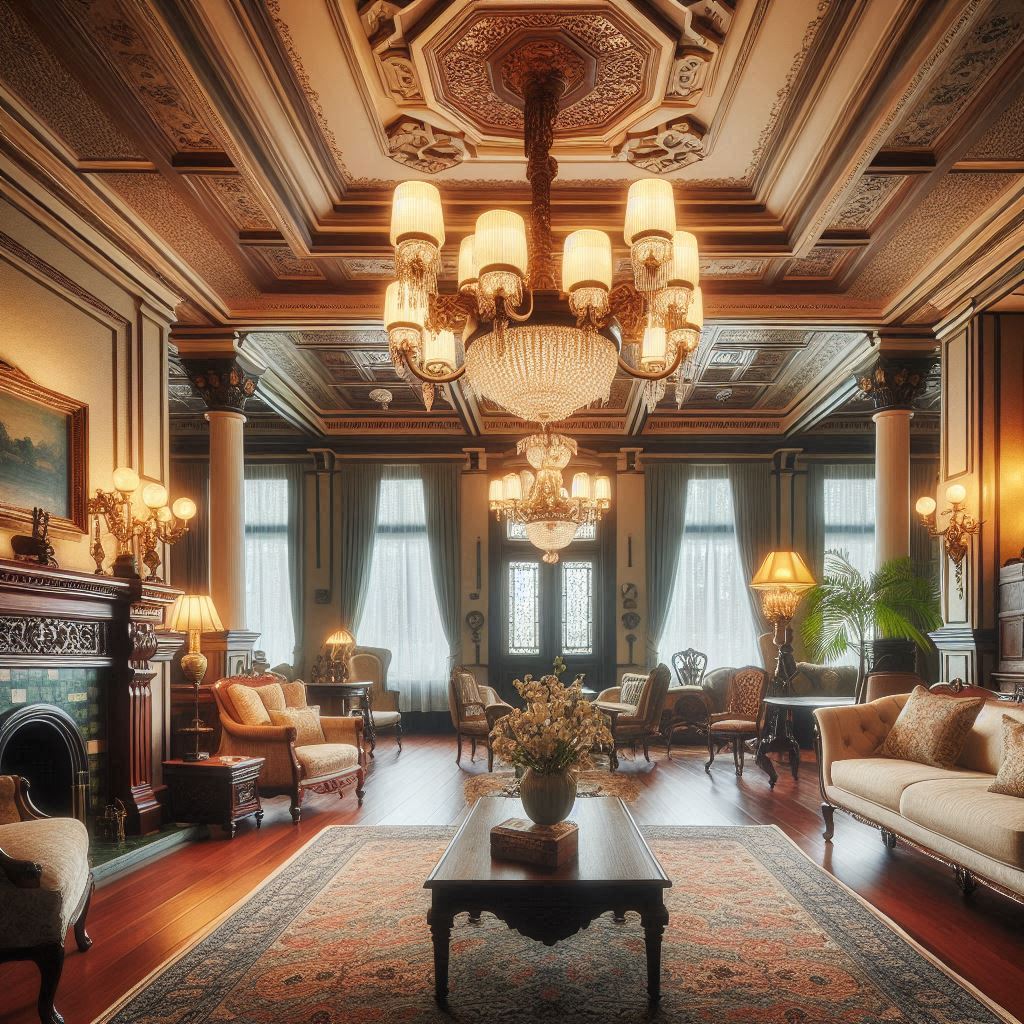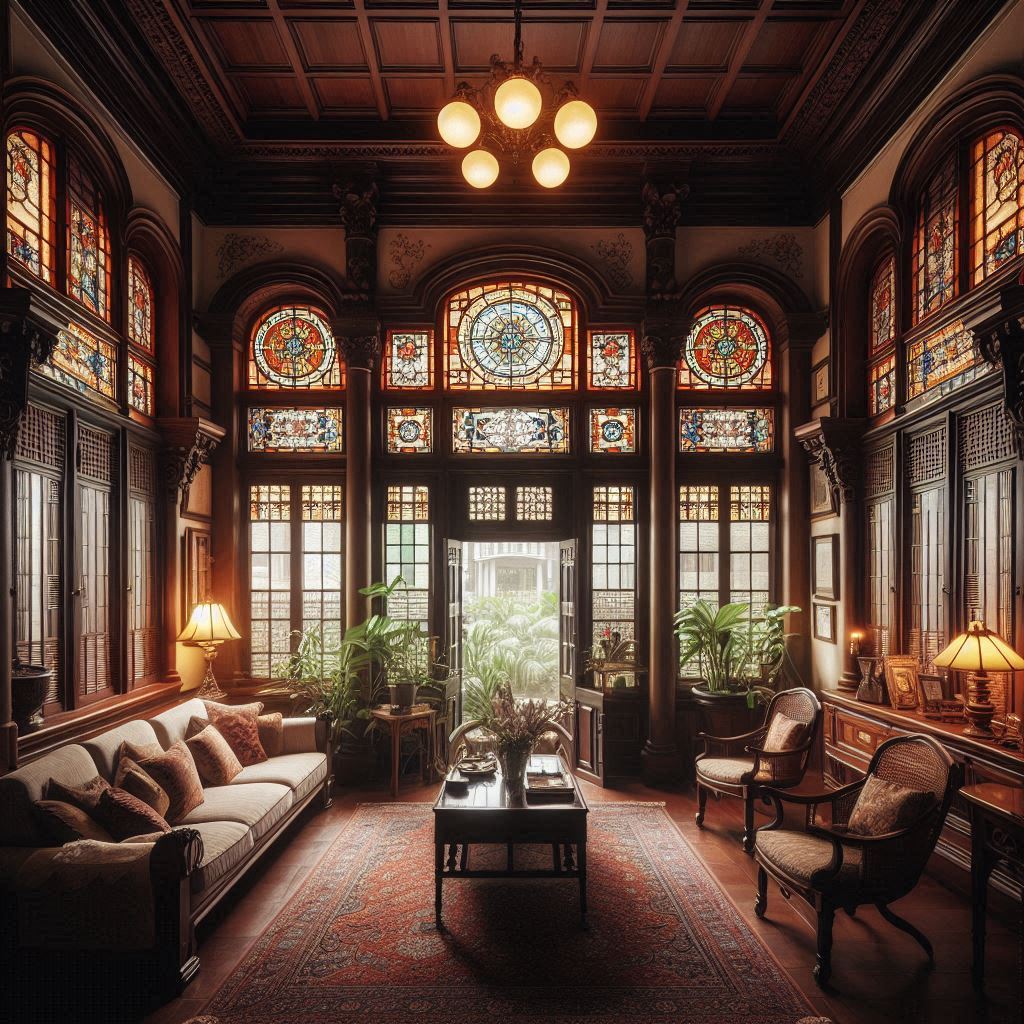Heritage house interior design is all about bringing out that timeless charm, right? But what are the must-have features to focus on?

Have you ever wondered what truly makes these old homes feel so cozy and full of character?
From classic moldings to charming hardwood floors, there’s so much to explore. But, how do you decide which elements deserve the spotlight?
And, are there certain design features that simply can’t be missed?
If you want to create that perfect heritage vibe, it’s all about getting the details just right.
So, let’s dive in and find out which 7 key features will truly transform your heritage home into a design masterpiece!
Why Should Interior Designers Focus on Heritage House Interior Design?
Heritage house interior design is super important for interior designers because it brings back the charm of old-world craftsmanship.
By focusing on these classic features, designers can create spaces that feel warm and inviting. But why does this matter so much?
Well, clients truly love the unique and timeless atmosphere that heritage elements bring to a home. Plus, using authentic design details, like vintage light fixtures or original woodwork, can add a lot of value to any project.
Also, blending the old with the new can create a stunning look that really stands out. In the end, focusing on heritage elements helps interior designers build a strong reputation for creating memorable spaces that clients adore.
So, it’s definitely worth the effort to understand these features and include them in your projects!
What Are the 7 Must-Have Features for Heritage House Interior Design?
Now that we understand why heritage house interior design matters so much, let’s dive even deeper, shall we?
Imagine creating spaces that instantly make people feel at home while still honoring the rich history of the house. Doesn’t that sound amazing?
But, to truly capture that classic charm, you have to know which features are absolutely essential. After all, focusing on the right details can really make all the difference.
So, which elements should you prioritize to get that authentic heritage look? And, how can these key features elevate your design projects and impress your clients?
Well, keep reading to discover the 7 must-have features that will transform any heritage home into a timeless masterpiece!
What Are the 7 Key Features Every Heritage House Interior Design Should Have?
When designing a heritage house interior design, it’s essential to focus on specific elements that highlight the unique history and charm of the space. These features not only preserve the character of the home but also create a timeless and welcoming atmosphere. Here are 7 mandatory features that will elevate any heritage house.
1. Original Moldings and Trims
One of the most important elements in heritage house interior design is the preservation of original moldings and trims. These details—whether crown moldings, baseboards, or door frames—give a sense of sophistication and history to the home.
Often, these pieces are hand-carved or crafted with intricate patterns that can’t be easily replicated. When restoring a heritage home, it’s crucial to restore these features as much as possible.
If the original trims are missing or damaged, consider replicating them using traditional materials to maintain the home’s authentic feel.
Incorporating these details will help create a connection to the past while enhancing the visual appeal of the space. Therefore, focusing on moldings and trims is essential for any heritage house interior design project.

2. Vintage Light Fixtures
Lighting plays a vital role in the overall feel of a room. In heritage house interior design, choosing vintage light fixtures is key to maintaining the home’s original charm.
Consider chandeliers, pendant lights, and sconces made from materials like brass or crystal. These fixtures not only provide illumination but also act as statement pieces that reflect the era of the house.
Vintage lights with intricate designs can enhance the character of the space. For instance, a crystal chandelier can instantly add elegance, while a brass sconce can bring warmth to a hallway.
Choosing the right lighting helps you balance functionality with style, creating an atmosphere that’s both nostalgic and inviting.

3. Stained Glass Windows
Stained glass windows are often one of the standout features of heritage homes. These colorful and artistic windows add a unique touch to any room. They can be found in many older houses, especially in entryways, stairwells, and even in the design of doors.
If the original stained glass is still intact, it should be carefully restored to preserve its beauty. In cases where the original glass is no longer present, consider custom-made stained glass panels to match the historical style of the home.
This addition not only brings in natural light but also adds a burst of color and artistry to the space.
Therefore, stained glass windows are a must-have in heritage house interior design.

4. Hardwood Floors
Hardwood floors are an essential element of heritage house interior design. These floors are not only durable but also have a timeless beauty that adds warmth to any room. Original hardwood floors are often one of the most desirable features of older homes, with unique patterns and grains that can’t be duplicated in modern flooring.
If the original hardwood floors are still in place, they should be carefully refinished to bring back their luster. If replacing the floors is necessary, look for reclaimed wood to maintain that vintage feel.
Hardwood floors provide an elegant foundation for any heritage design and are essential for creating a welcoming and authentic environment.

5. Classic Fireplaces
A fireplace is often the heart of a heritage home, offering both warmth and a focal point for any room. In heritage house interior design, a classic fireplace can be the centerpiece that ties a room together. Whether it’s a grand marble mantle or a rustic brick hearth, preserving or restoring a fireplace is crucial in maintaining the home’s original charm.
For many heritage homes, fireplaces were designed with intricate detailing and often feature period-specific materials like marble, stone, or wood. Even if the fireplace is no longer in use, keeping it intact or restoring it to its original design can add significant character to the space.
It helps evoke the coziness and grandeur of the past, making it a key feature to focus on in any heritage house design.

6. Decorative Ceilings
Another important detail in heritage house interior design is the ceiling. Many older homes feature decorative ceilings with intricate plasterwork, frescoes, or exposed wooden beams. These ceilings add a layer of richness to the space and can become a striking visual element.
Restoring these ceilings to their original glory can be a complex but worthwhile task. Whether it’s repairing delicate plasterwork or refinishing exposed beams, these architectural details make a huge difference in preserving the home’s history.
If such features are not present, consider adding custom ceiling treatments that reflect the style of the period. By focusing on the ceiling, you can add an unexpected touch of elegance to any room.

7. Antique Furniture and Decor
Lastly, no heritage house interior design is complete without the right furniture and decor. Antique pieces, such as vintage rugs, armchairs, and mirrors, not only contribute to the overall aesthetic but also tell a story. These items often carry with them the history of the house, adding depth and character to the space.
When selecting antique furniture, aim for pieces that match the era of the home. For example, if the house was built in the Victorian era, consider adding vintage Victorian-style furniture. This not only enhances the authenticity of the design but also helps maintain the overall vibe of the heritage house.
Including these items in your design project will create a harmonious blend of old and new, making the space feel both lived-in and timeless.

Conclusion
In conclusion, focusing on the right features is essential for a successful heritage house interior design. By restoring and highlighting elements like original moldings, vintage lighting, stained glass windows, and hardwood floors, you not only preserve the history of the home but also create a timeless and welcoming space.
Additionally, classic fireplaces and decorative ceilings add a layer of sophistication and charm. These features are crucial in maintaining the home’s unique character. Furthermore, incorporating antique furniture and decor enhances the overall design, providing depth and authenticity to the space.
Therefore, when planning a heritage house renovation or redesign, it’s important to pay attention to these key elements. They help maintain the home’s historical feel while making it functional for modern living. By prioritizing these features, interior designers can create spaces that honor the past while providing comfort for today’s needs.
So, remember: heritage house interior design is all about preserving the beauty of the past while making it relevant for the future.
